Butterscotch is one of my favorite flavors, and I think it has become a bit of a punching bag flavor because packaged butterscotch pudding (and similar butterscotch items) just don’t taste very good at all.
I’m here as an advocate for all things butterscotch, so I’m taking the time to give you the low-down on all things butterscotch.
I hope you find this post useful. And if you’re already a butterscotch fan, I invite you to check out my entire butterscotch recipes category.
Pastry Chef Online Participates in Affiliate Programs. If you make a purchase through one of my links, I may earn a small commission. For more information click to read my disclosure policy
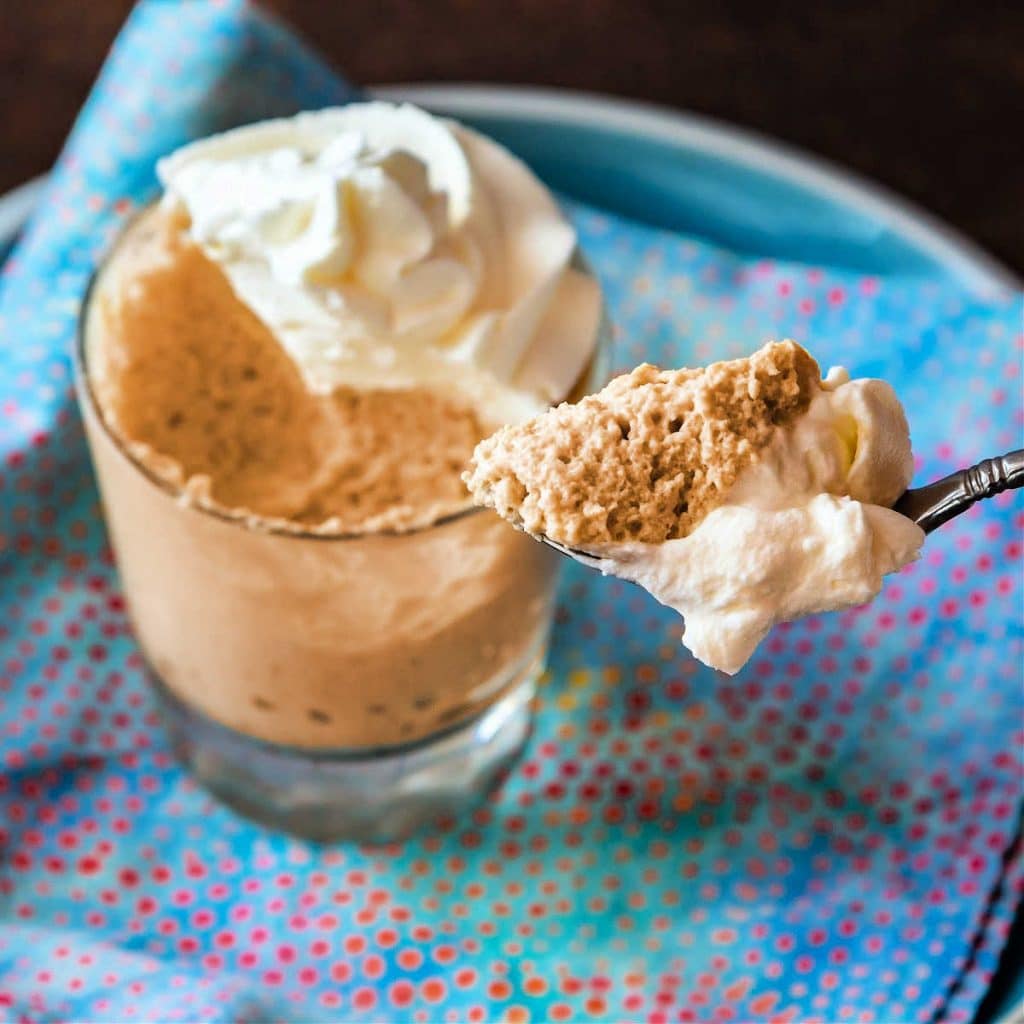
What You’ll Learn in This Post
✅What is butterscotch
✅What butterscotch tastes like
✅Old-fashioned/traditional butterscotch vs modern butterscotch
✅How to make butterscotch
✅What to do with it once you’ve made it
Related Reading
The Difference Between Butterscotch and Caramel
WHY PEOPLE THINK THEY DON’T LIKE BUTTERSCOTCH
Butterscotch gets a bad rap. Everyone is all “Oooh, caramel!” and “Oh, I just had some lovely salted caramel.” and “Yes, each caramel has exactly three flakes of salt from Tatooine balanced atop it. Magical!”
But try talking butterscotch to these folks, and Noses turn Up. They say things like this:
- “It’s too sweet.”
- “It tastes like chemicals”
- “It’s a weird color. What is up with that?”
I submit to you that these butterscotch naysayers just haven’t had good butterscotch.
As a matter of fact, most of the store-bought products labeled as “butterscotch flavored” don’t even contain the two main components of the flavor at all. (Spoiler alert: brown sugar and butter)
WHAT IS BUTTERSCOTCH AND WHAT DOES IT TASTE LIKE?
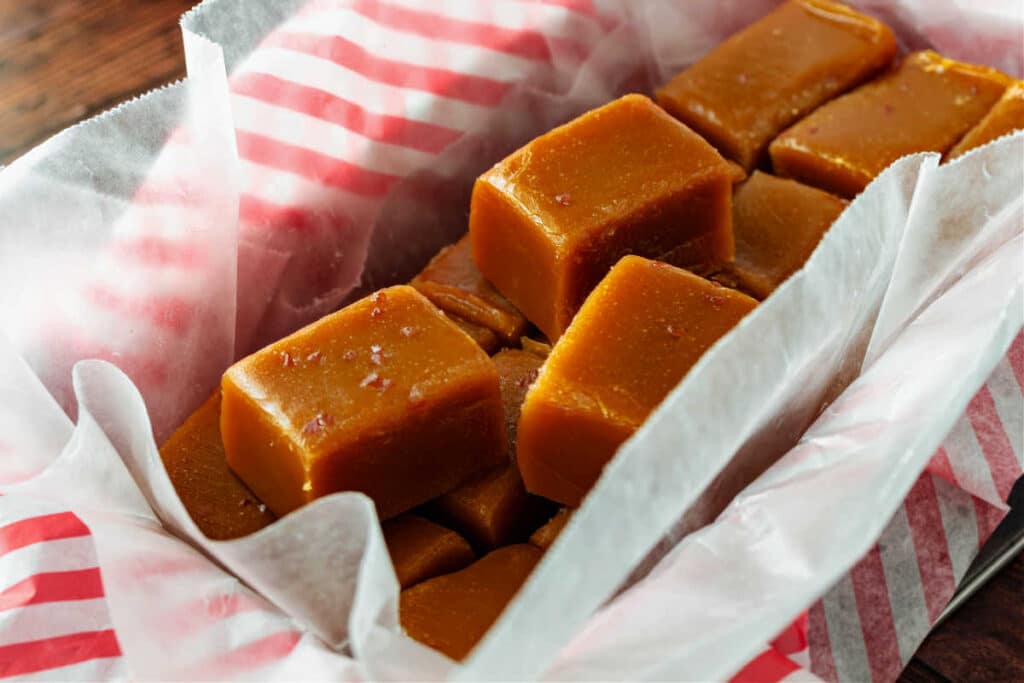
Butterscotch is rich, complex, buttery, and a bit smoky. It should be a little bit salty and not super sweet.
Butterscotch tastes like the best crunchy toffee you’ve ever had, minus the nuts.
The disctinctive flavor comes from the perfect marriage of caramelized sugar, browned butter, and a hint of molasses.
In other words:
butter + salt + sugar + molasses + heat = butterscotch
Why salt? Back when butterscotch first came on the scene (see my recipe for authentic butterscotch candy), almost all butter was salted to allow for longer storage.
How much salt? Kind of a lot. And old school butterscotch contained equal parts of sugar and butter plus 1/4 part, by weight, of treacle or molasses.
Lots of butter means lots of salt, so salt is really an integral part of the flavor profile. Not enough salt, and your butterscotch ends up tasting too sweet and not with nearly as deep and complex a flavor.
WHAT FLAVOR IS BUTTERSCOTCH?
Butterscotch is a flavor, so there aren’t really any other flavors of butterscotch. It’s not like lollipops where you could have cherry lollipops, grape lollipops, or lime lollipops.
You can have flavored butterscotch, as with my coffee butterscotch sauce, but butterscotch was originally a candy. The flavor of this candy was so great, folks started to use it as a flavoring in other desserts like cakes, custards, etc.
MODERN BUTTERSCOTCH VERSUS OLD-FASHIONED BUTTERSCOTCH
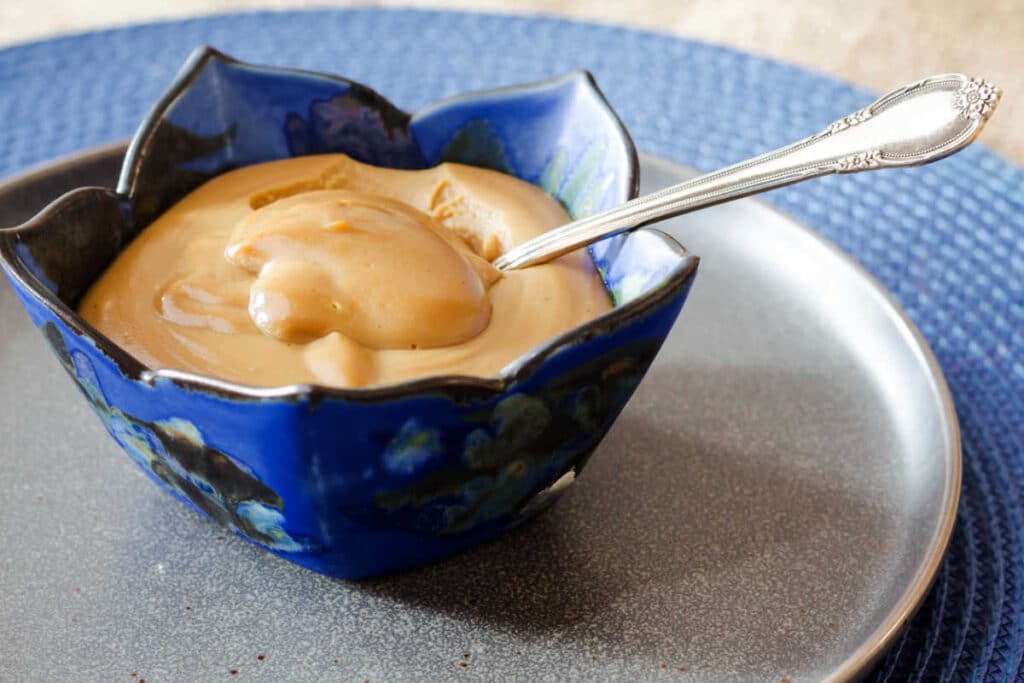
Would you like to save this post?
Looking at the proportions of ingredients for original butterscotch, which was a hard candy before it was a flavor used in other desserts, there is a relatively large amount of molasses in it. 25% of the weight of the sugar and butter, to be exact.
According to How Stuff Works in their post on making homemade brown sugar, dark brown sugar these days contains 6.5% molasses.
If you were to make butterscotch using the original proportions, you might think it a little bitter with way too much molasses flavor. Look at some of the comments on my authentic butterscotch candy post, and you’ll see folks saying that.
I have a butterscotch sauce recipe where molasses is almost 19% of the weight of the sugar. Even that’s a bit more molassesy than most modern versions.
These days, we like our candy sweeter, so dark brown sugar is ideal for adding molasses flavor without being too bitter for modern taste buds.
HOW TO MAKE BUTTERSCOTCH
There are degrees of butterscotchiness. The longer you cook the brown sugar and butter together, the deeper the flavor will be.
To get full on butterscotchy goodness, you need to cook the brown sugar and butter together until the butter browns and the sugar caramelizes.
Since the milk solids in the butter will brown well before the sugar caramelizes, you’ll be looking for indications that the sugar has caramelized to tell when your butterscotch is done.
- Melt the butter in a heavy bottomed saucepan. American style butter contains about 18-20% water, so melt the butter first over medium low heat. Don’t let it boil because we need the water in the butter to help dissolve the sugar.
- Add the dark brown sugar and cook the two together. Cook the butter and brown sugar together, stirring constantly, until the sugar is at least mostly dissolved (this is easier to do when you use more butter rather than less, since more butter equals more water). Once the sugar has dissolved, bring the mixture to a boil.
- Cook until the sugar caramelizes. At first, the mixture will be smooth and bubbly. At a certain point, your butterscotch mixture will separate, and you may see butter swimming around in the pan. That’s okay. Keep going. Cook and stir until the mixture comes back together, it starts to smoke a bit, and you smell the distinctive smell of caramelized sugar. That’s how you know that you’ve gotten the deepest flavor that you can.
You can see the steps in the photo below.
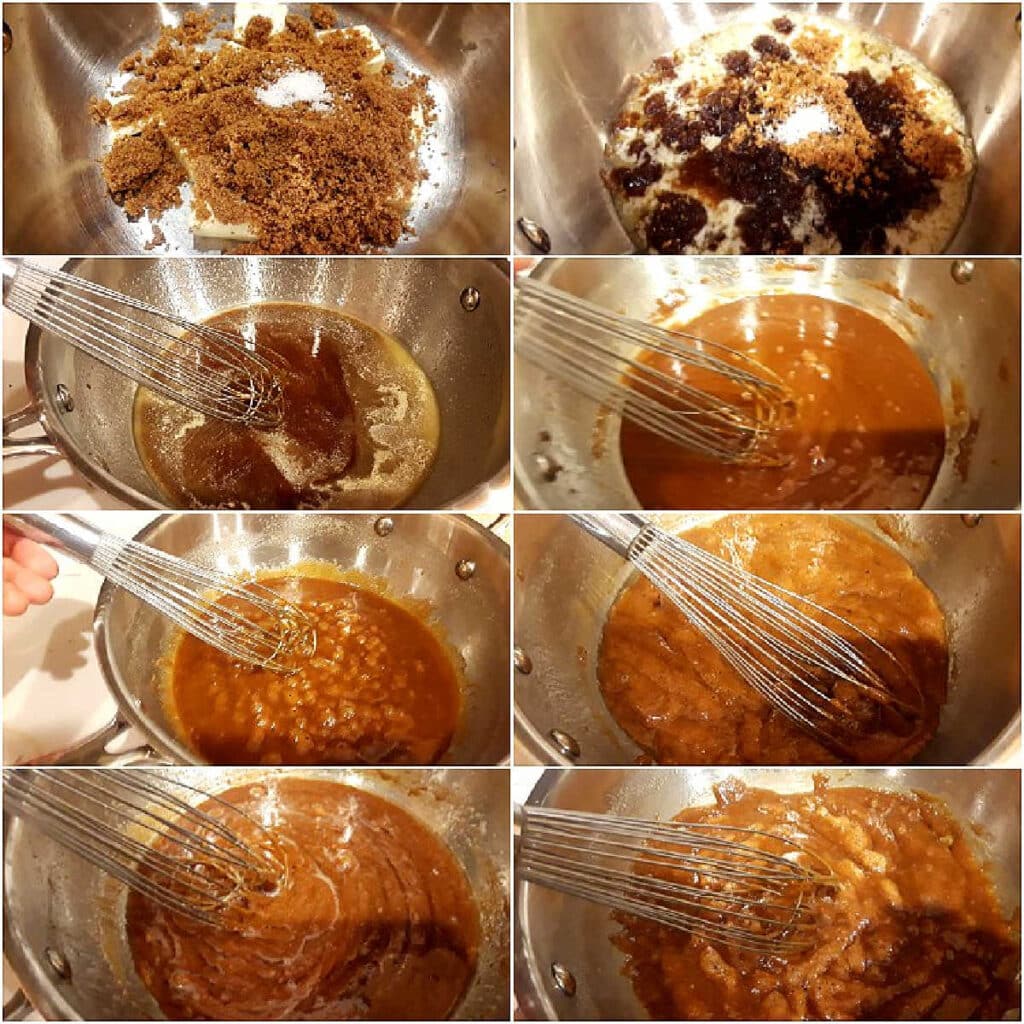
WHAT KIND OF SUGAR TO USE TO MAKE BUTTERSCOTCH
If you’re going old-school, you can use granulated sugar and add in molasses on its own. That way, you are free to add as little or as much molasses flavor as you want.
But, for modern butterscotch (less bitter, less molasses), use dark brown sugar at the sweet spot for modern palates of 6.5% molasses.
Light brown sugar doesn’t really have quite enough molasses in it to make a really deeply flavored butterscotch, so stick with dark brown.
WHAT TO DO WITH BUTTERSCOTCH

Once you have made the butterscotch, the simplest thing to do is to pour it out and allow it to cool as an old-school butterscotch hard candy.
You have other options, though. To make a butterscotch sauce, you can add heavy cream.
Once you’ve made your sauce, you can use it over ice cream, or you can add the sauce to another recipe to infuse the flavor of butterscotch into it, like I did with my butterscotch cheesecake recipe and my butterscotch creme brulee.
Questions?
If you have any questions about this post or recipe, I am happy to help.
Simply leave a comment here and I will get back to you soon. I also invite you to ask question in my Facebook group, Fearless Kitchen Fun.
If your question is more pressing, please feel free to email me. I should be back in touch ASAP, as long as I’m not asleep.

Hi, y’all! I hope you’ve enjoyed this post and hopefully also learned a thing or two.
If you like my style, I invite you to sign up for my occasional newsletter, The Inbox Pastry Chef.
Expect updates on new and tasty recipes as well as a bit of behind-the-scenes action. I hope to see you there!

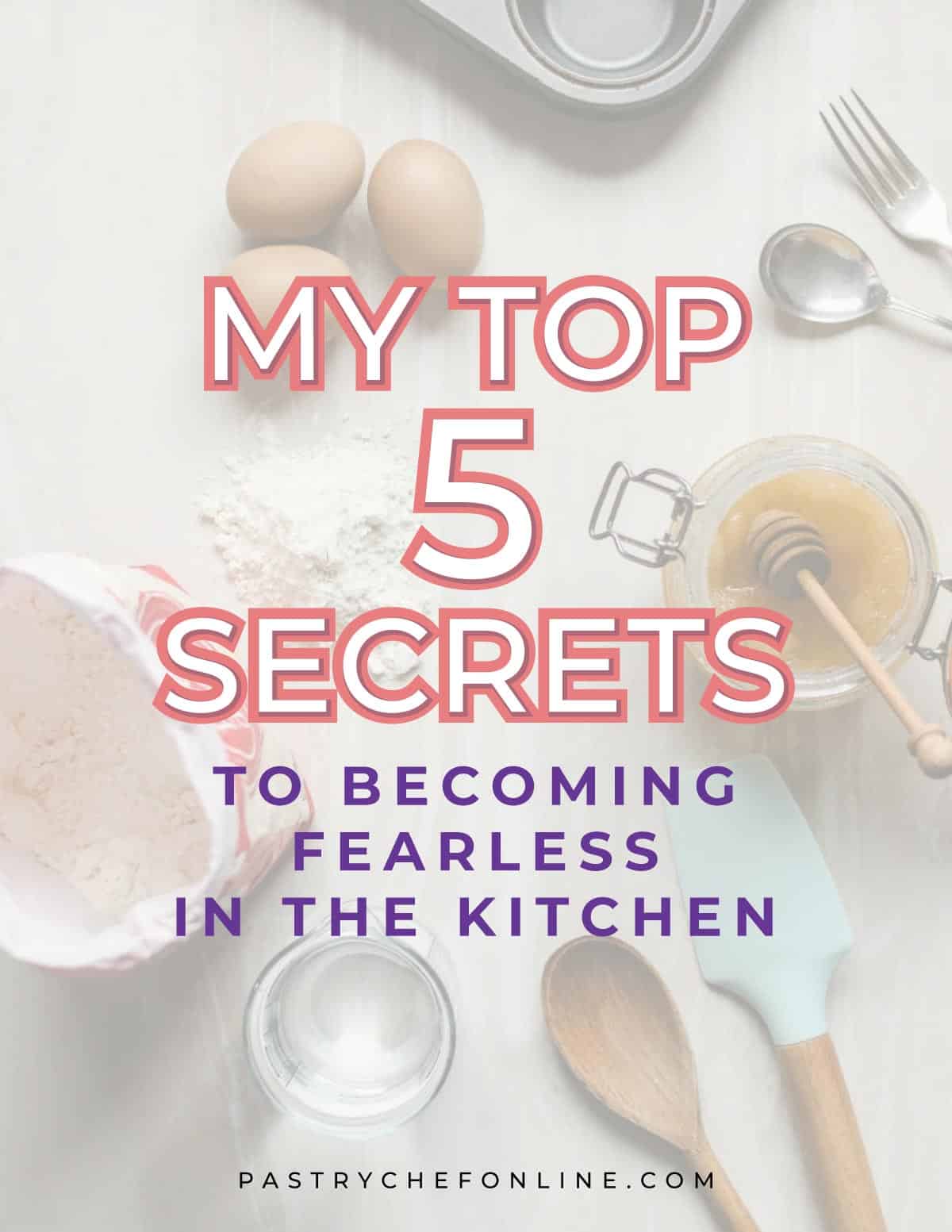
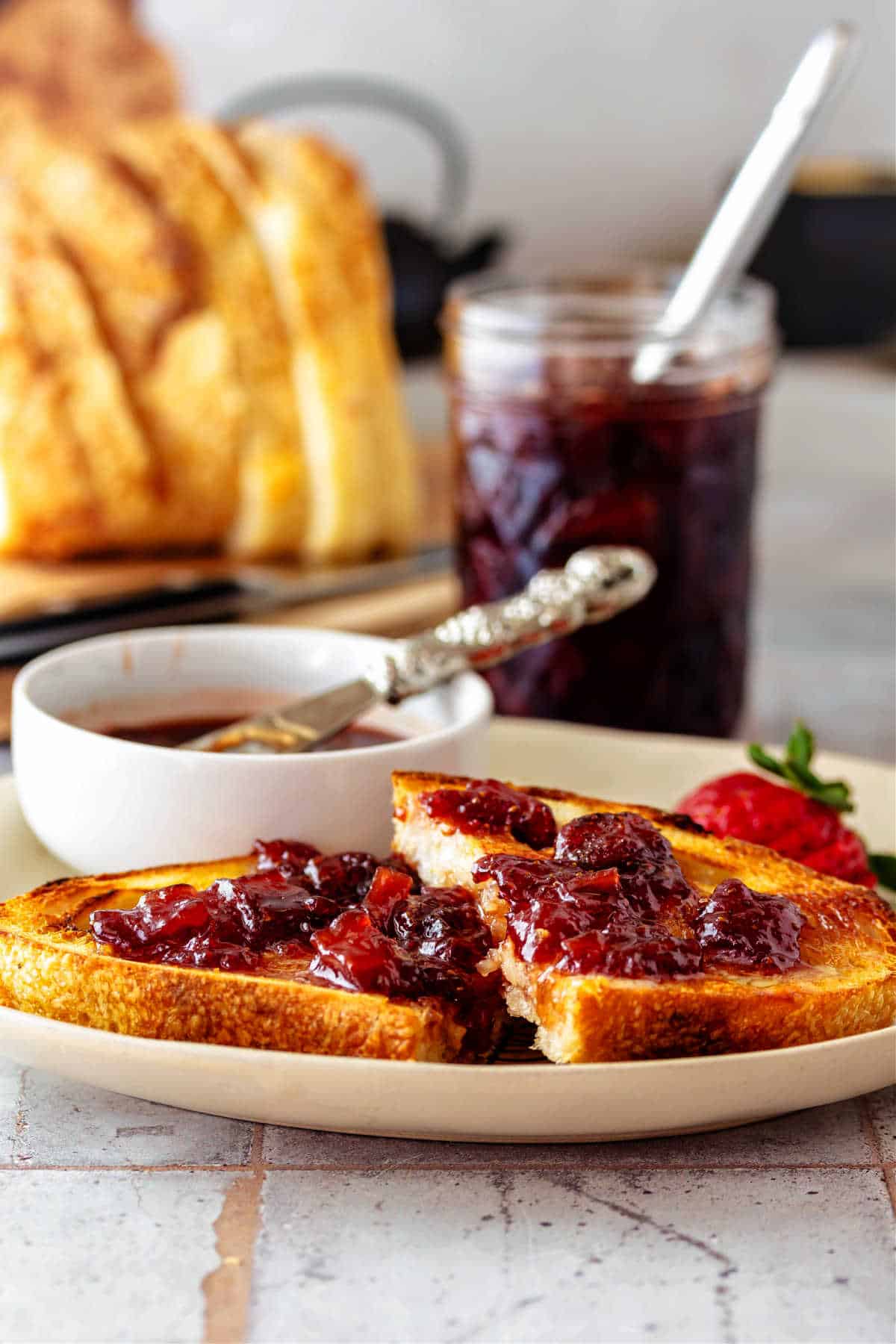
Join in Today!

You had me at “Butterscotch”… my kryptonite. I love caramel as well but there is nothing like true butterscotch and I recently rediscovered it (or discovered the real deal anyway) and have been making it whenever I can find a reason to use it. I make extra and put it in ice cream or in a Bundt. And I was thrilled to see your recipes. Only I hate to admit I have an allergy to eggs in any large unity other than traces of egg white. Unfortunately I have had to make modifications to otherwise promising recipes but where there is browned butter and brown sugar (I do try Keto most of the time but not with butterscotch. It’s like Christmas with a digital Christmas tree.
That said, is there any suggestions for say the meringue pie to a cream pie or mousse -ish (maybe I can call it an elk)? I do love the French and Utalian Creme cakes as well but I am embarrassed to say o don’t use eggs. Unless I make it for company
BTW I absolutely live the Frangipane.
Hey, Merzy! You could potentially make an aquafaba meringue and leave out the yolks, using additional cornstarch to thicken the filling. Or just use whipped cream on top of the pie rather than meringue. Even with the butterscotch creme brulee, you can get away with leaving out the yolks and introducing a bit of starch for texture. I hope that helps. I can see how not being able to have eggs could really cramp your style! You could also experiment using the plant based whole egg replacers available these days.
From one butterscotch lover to another, I’m glad you’re here, and I hope you can modify these recipes to suit your restrictions!